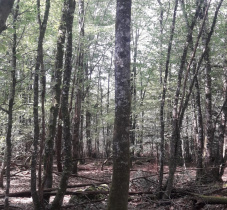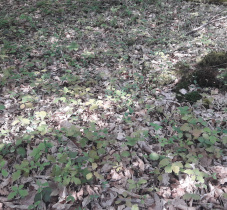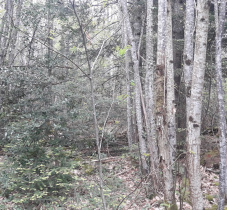Project description
With Reforest'Action, take part in supporting the natural regeneration of this forest in Charente !
The project at a glance
- Number of trees to be financed: 5,715
- Area of the operation: 3.81 hectares
- Main species enhanced: chestnut, oak, hornbeam, fir, sycamore maple
- Project type: support for natural regeneration of the massif
- Regeneration season: 2022-2027
- Region: Nouvelle-Aquitaine
- Certification: PEFC
The origin of the project
This project is located in an important massif of 400 hectares in the north of Charente. The two parcels concerned by this project are currently populated by a coppice of chestnut, showing dieback, and a very low commercial value. Thanks to its financing, Reforest'Action is able to carry out silvicultural operations aimed at promoting the remaining species in the face of competition from the chestnut tree. The objective is to enhance diversity by preserving the stems with the highest conservation value. Gradually, the stand will diversify to obtain a forest that can provide sustainable ecosystem services, such as wood production and diversification of the local landscape. The project also aims to make the forest more resistant to biotic and climatic hazards. The planted trees will store carbon and thus fight against global warming.
The Assisted Natural Regeneration
Assisted Natural Regeneration (ANR) is a natural method that helps preserve and strengthen existing forests through management that combines the trees’ natural reproduction cycle with silviculture work. To find out more about our ANR projects, read our brochure or watch the explanatory video.
Generated benefits
-
Fight against climate change: trees provide fruit, fodder, wood, resins, tannins etc. Once planted, they regulate temperatures through the shade of their foliage. Carbon sinks, they store CO₂ and are valuable allies in the fight against global warming. They restore soil fertility and prevent soil erosion.
-
Development of biodiversity: agroforestry promotes biodiversity and provides multiple habitats and species. Micro-organisms, fauna and flora participate in the restoration of an ecological network. They provide refuges for birds that regulate pest populations on crops.
-
Protection of territories: the trees regenerated in agroforestry help to protect the land from extreme weather events. By creating shaded areas, the trees preserve the crops during the dry season and provide them with a protective cover during the rainy season.
-
Soil enrichment: the leaves fallen from the trees will allow the creation of organic matter that will enrich the soils and contribute to the proper functioning of the forest ecosystem.
-
Wood supply: eventually, some mature trees may be harvested to supply the timber industry, economic lung that needs to operate a sustainable energy transition.
-
Soil nutrition: trees retain rainwater on the soil surface and filter it before it enters the water table. Thus, forest canopies regulate the water cycle and help preserve the planet's water resources.






